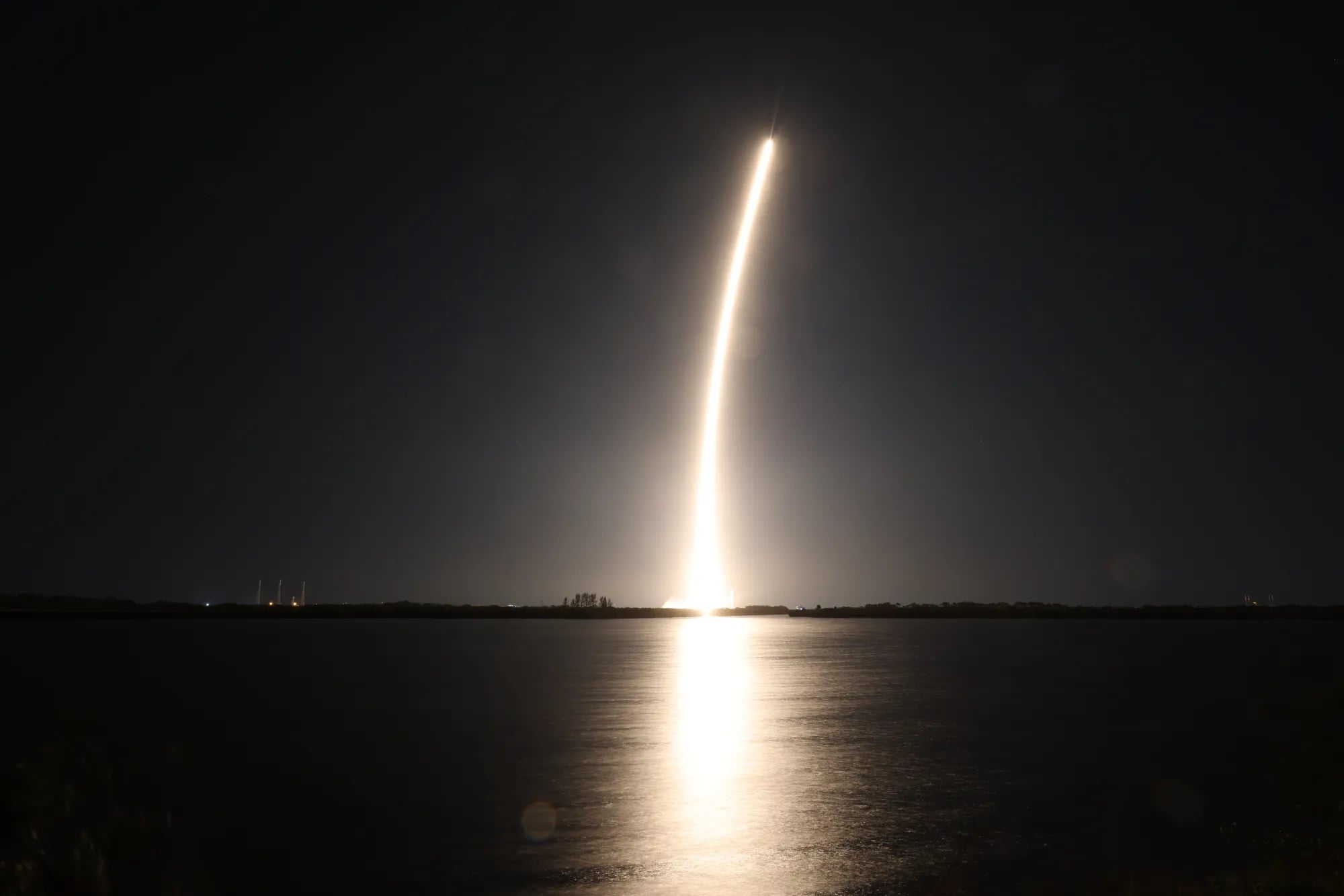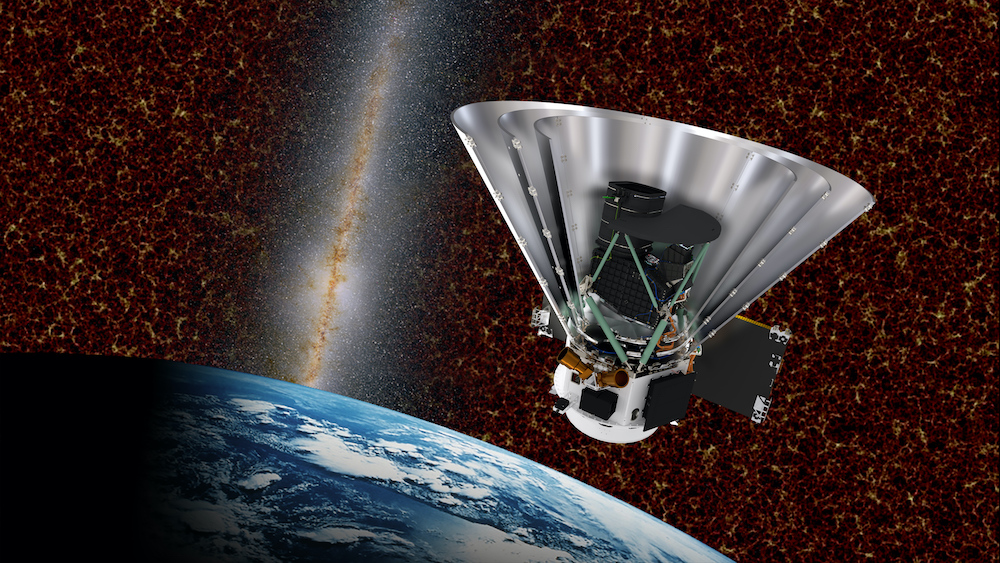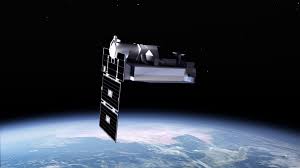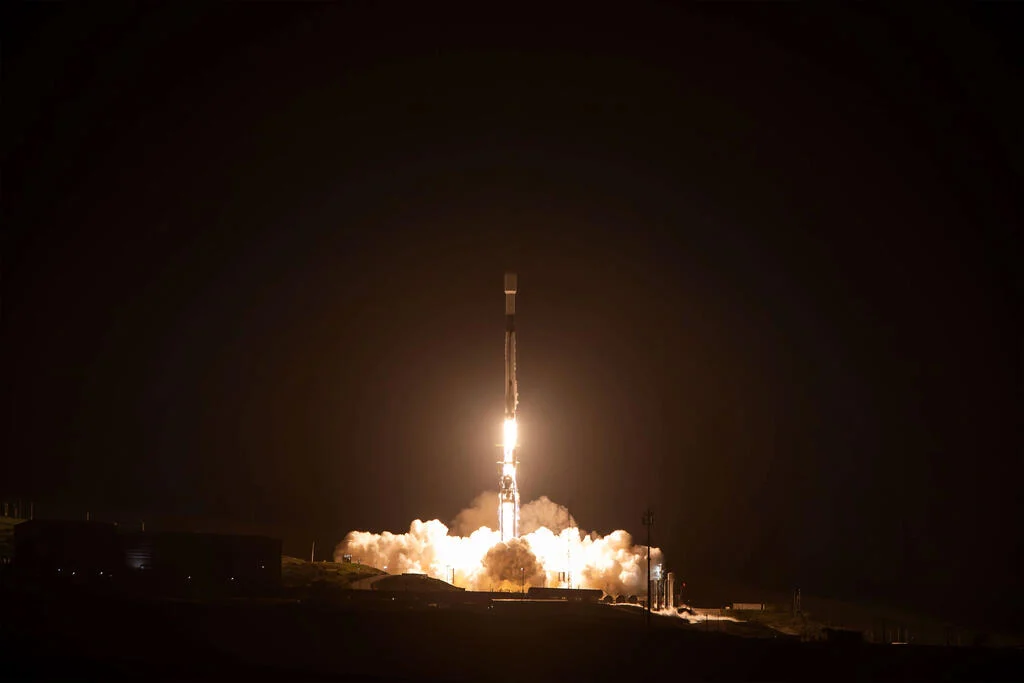On March 11, the California skyline was once again treated to the launch of the SpaceX Falcon 9 rocket from the Vandenberg Space Force Base. It carried two missions into space; SPHEREx to study the origins of the Universe and the molecular clouds of the Milky Way and four other satellites making up PUNCH. This latter mission is tasked with exploring how the Sun's outer atmosphere causes the solar wind.
The SpaceX Falcon 9 is a reusable two-stage orbital launch vehicle that has revolutionised launches into orbit. Standing at 70 meters tall with a diameter of 3.7 meters, it can carry payloads of up to 22,800 kg to low Earth orbit and 8,300 kg to geostationary transfer orbit. Its most recent launch powered off the launchpad at 8:10 p.m. PDT on March 11th taking two separate missions into space.
 A Falcon 9 night launch (Credit : Space X)
A Falcon 9 night launch (Credit : Space X)
NASA's SPHEREx observatory was one of the missions on board the Falcon 9 and its objective is to investigate the universe's origins, galaxy evolution, and search for life-supporting molecules within our galaxy. Its name stands for "Spectro-Photometer for the History of the Universe, Epoch of Reionization and Ices Explorer," really quite the mouthful so I can see why it's been shortened to SPHEREx! Sharing the same launch were four small satellites making up NASA's PUNCH mission, the 'Polarimeter to Unify the Corona and Heliosphere,' and its objective is to study the transformation of the Sun's outer atmosphere into the solar wind.
The SPHEREx and PUNCH missions will both operate in a Sun-synchronous orbit along Earth's day-night boundary. This keeps the Sun at a constant position relative to the spacecraft making observations far easier for PUNCH and so that SPHEREx is shielded from solar interference. After launch, NASA's Jet Propulsion Laboratory successfully made contact with SPHEREx at 9:31 p.m. PDT, following which there will be a one-month checkout period before its two-year mission. The four PUNCH satellites separated from the rocket about 53 minutes after launch, with ground controllers confirming communication with all spacecraft. PUNCH now enters a 90-day commissioning phase before beginning scientific operations to study the solar wind.
 Artist impression of SPHEREx (Credit : NASA/JPL)
Artist impression of SPHEREx (Credit : NASA/JPL)
SPHEREx mission is to create complete 3D maps of the sky every six months to complement NASA's more detailed but narrower-view from telescopes like Webb and Hubble. Using spectroscopy, it will measure distances to a whopping 450 million galaxies, providing insights into the inflationary period of the Universe that occurred shortly after the Big Bang. It will also measure the collective glow from all galaxies across the sky to reveal new information about galaxy formation and evolution.
The PUNCH mission on the other hand will conduct three-dimensional observations of the Sun's corona and the inner Solar System to investigate how solar material ejected from the Sun transforms into the solar wind.
 Artists impression of one of the four PUNCH satellites (Credit : NASA)
Artists impression of one of the four PUNCH satellites (Credit : NASA)
It will also study the formation and evolution of phenomena like coronal mass ejections, which can create dangerous levels of radiation affecting spacecraft and astronauts in orbit. Understanding more about stellar wind production and the development of hazardous space weather events helps to understand how it impacts our planet but will also highlight that interplanetary space is not empty but filled with solar wind that interacts with our planet.
Source :NASA Launches Missions to Study Sun, Universe's Beginning
 Universe Today
Universe Today
